
-
@grierdill I totally agree. Tungsten balanced bulbs is horrible. Before I started this project I thought this camera would be great for this work (except for heavy files and all the battery changes) because of the prores files which would give me better chances of correcting situations with bad light in post. But because of the cameras inability to handle warm indoor lights it has become a real headache (even after I bought the IR-cut filter). I think a lot of dslrs could give a better image out of the camera in these conditions. I shot stuff outdoors and in locations with daylight balanced light which I'm really satisfied with though and I'm happy it's prores when I try to fix the issues.
-
I did some quick tests before shooting and discovered that using normal tungsten balanced bulbs was A LOT worse than daylight balanced CFLs. It was night and day with the skin tones. Lit and balanced with CFLs, the skin had depth and character, a lot more detail, and lots of subtle nuances that looked great. BUT lit and balanced for tungsten bulbs, the skin looked basically like it would on a DSLR, pretty flat, still pretty yellow and orange.
I would shoot everything with daylight bulbs if possible, but if you don't have any control then... you don't have any control.
-
@vicharris I got loads of more footage that bad or worse. You're right there's no IR-cut on at the time, I bought my Hoya Ir-cut after, but I still get almost the same problems when using the camera indoors with certain kind of lights (even if they´re not mixed, all the same kind of bulb). I know some indoor lights are horrible etc, but with the GH2 I would still be able to get some decent (not great, but ok) footage under those conditions. With bmpcc I, obviously, can't. Right now I'm working on this thing by myself were I'm in different locations and I need to grab people and ask a couple of questions with no time to set up lights etc. I might use a led on my rig or something like that, but then I will definitely have problems with mixed lights. I might have to surrender and use my GH2 for this kind of indoor work instead.
I made an quick attempt to grade it, but I don't have a properly calibrated monitor at the place right now. I think it looks a bit better anyway.
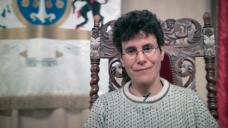
 gradetest.jpg1920 x 1080 - 955K
gradetest.jpg1920 x 1080 - 955K -
Sorry, I wasn't clear. I meant using all the house lights, most times actually ends up "mixing" light sources. Most places will not have the same bulb in every fixture simply due to maintenance workers replacing them at different times. So now you have multiple, crappy florescent s, hammering down from above, creating all kinds of spikes and color irregularities. Then we're guessing there's no IR cut filter on there. Perfect recipe for a destroyed image. I've never seen an image out this camera that bad (minus the Tiffen 2.1 IRND) and if your daylight shots are fine, there's not many things left.
Actually, come to think of it, that's exactly what it looks like with the Tiffen 2.1 IRND which confuses the sensor into pumping up the red channel to compensate.
-
Most sensors can't handle ordinary household fluorescent lights, even analog film had difficulties. They only look similar to white (or warm) light to our eyes, but they have terrible CRI. For heavens sake, don't skimp on lights, even cheap Tungsten beams from construction hardware stores are better then these.
You'll need to try a compensation not only on the blue-orange axis, but on the green-magenta too.
-
Because of the defects in the original, try using the BMD, rather than the hook, LUT. It will give a more neutral image to work with, with less of a red cast. When the cast is neutralized as best you can, you can put a window on the face to bring up her skin tones.
But as noted, there's no way you're going to make this shot beautiful, there's just too much off to begin with.
-
@CaptainHook That last one looks great (compared to the starting point). I'll import your tiff and look at the scopes and try to reproduce it. Thanks a lot!
@vicharris I know the lighting conditions wasn't good, but there is no mixing of light sources. It was maybe 5 spotlights from the ceiling. The pocket cameras white balance-settings and sensor doesn't seem to cope with this situation. Or I'm doing something wrong which I can't figure out. With the GH2 I know I would have been able to set it up for quite neutral colors in the same place
-
@CaptainHook Great! That image is looking way better than what I achieved. I just bought an Hoya 72mm UV and IR Cut, but I still get the same problem sometimes indoors. Love your luts and get great results with them when the files are ok. Do you have your latest Luts as .mga for use with LUT-buddy? I totally agree that this should have been fixed in front of the camera, but I'm working on this project by myself and often have to use whatever lights available. With the GH2 I know that I would have been able to get good results in these conditions, but it seems like the bmpcc sensor can't handle this kind of light. There is no problem with the amount of light since this is recorded overexposed at 800 ASA.
-
Listen to Hook. You are mixing crappy lights. It has nothing to do with the camera. I'm guessing you're not using a quality or any IR cut in front of the glass either, right?
-
My attempt applied to the tiff upload. The compression on the thumbnails here is pretty brutal!

 Hook_Simple_V0.5_WB_Fix2_SML.jpg940 x 529 - 394K
Hook_Simple_V0.5_WB_Fix2_SML.jpg940 x 529 - 394K -
@_gl Thank you for your advice. I will look at that. But I think its hard to get the skin-tones good if I try to neutralize the whole image, I think I need to mask out the skin.
@jrd Here are two tiffs, one flat and one with hooks lut. The prores files are too big to upload.
I also wonder if other people with the bmpcc often encounters the problem or if it might be some problem with my pocket. In daylight the camera is great and in quite cold, strong fluorescent light. But with tungsten and warmer CFLs I get this kind of problems.
-
Those images are definitely pretty messed up. I had a go at fixing it (some compression macro blocking in there but hey) using my latest "Simple" LUT and some WB/Tint and curves adjustments.
But honestly this seems like the color temp of the lights you're using plus probably IR issues. Needs to be fixed in front of camera IMHO.
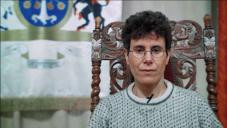
 Hook_Simple_V0.5_WB_Fix_SML.jpg940 x 529 - 335K
Hook_Simple_V0.5_WB_Fix_SML.jpg940 x 529 - 335K -
Haven't tried the jpeg, but could you somehow provide a prores frame or a .tif (or dng if RAW)?
-
Quick attempt: (in Photoshop, Levels -> Red gamma = 0.93, + curves & sat to grade)
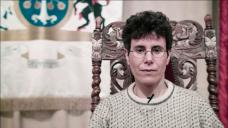
 gamma_adj_andgrade.jpg2293 x 1290 - 273K
gamma_adj_andgrade.jpg2293 x 1290 - 273K -
@Alfaerik, try messing with the gamma of the Red channel only. This will take out the cast without affecting the distribution. Try before applying any other correction (it works fine on your 1st flat image, not so well on the second).
-
I'm working on a documentary project with the bmpcc. A lot of stuff is shot indoors with the tungsten/compact fluorescent lamp lights available. In some conditions, often with compact fluorescent lamp I got really problems with the colors I'm getting out of the camera. The red channel is getting weird and I find it really hard to separate the colors and to get a natural look in post. I attached some pictures. It was shot with the sigma 18-35 fully opened and the metabones bmpcc to Nikon G adapter. The white balance was set to 3200k. The shot was a bit overexposed (a bit of ettr). Does anyone else have the same issue and maybe any workflow suggestions? The attached pictures shows the flat profile and scopes, also picture and scopes after I applied Hooks lut and at last with hooks lut and the exposure turned down a bit. I didn't include any images after I tried to grade it properly since I just want to illustrate the problem.
I tried to grade the files with a lot of different tools, not just the lut. But it's really hard with any tool.
These are jut quick examples. But you see the red/brown colors all over the image.
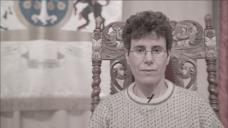
 bmpccflat.JPG2293 x 1290 - 196K
bmpccflat.JPG2293 x 1290 - 196K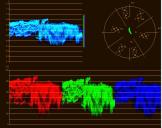
 bmpccflatscopes.JPG613 x 484 - 69K
bmpccflatscopes.JPG613 x 484 - 69K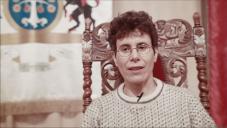
 bmpcchookexposure.JPG2195 x 1236 - 234K
bmpcchookexposure.JPG2195 x 1236 - 234K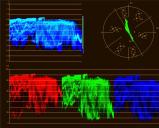
 bmpcchookexposurescopes.JPG609 x 491 - 77K
bmpcchookexposurescopes.JPG609 x 491 - 77K
 bmpcchookslut.JPG2290 x 1280 - 221K
bmpcchookslut.JPG2290 x 1280 - 221K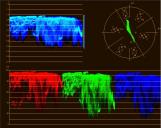
 bmpcchookslutscopes.JPG611 x 487 - 73K
bmpcchookslutscopes.JPG611 x 487 - 73K -
Blackmagic Pocket Cinema Camera (Body Only) Bundle w/Blackmagic 800mAh Battery, $895
-
Here is my entry for the Vitaly Personal View NEST Video Contest. I had no time to do the grading so I posted there a quick grading version, 720p only. So here are the final version, graded, 1080p. Filmed with BMPCC raw+14-140(old ) with Polaroid ND fader for exterior+Oly 17mm F1.8+Oly 45mm F1.8 for interior. I think oly dos not perform quite well with BMPCC. Maybe a IRcut filter is a must have... DNG were conformed with davinci in BM film,(cloudy or tungsten WB), edit in PPro, graded in davinci. PS Vitaly, can I put this final version on the contest page?
-
So I'm contemplating either purchasing a Tilta BMPCC cage then adding an offset should pad to the back and lanparte handles to the front but am also considering the Zacuto Marauder. Both would be used with the zacuto z-finder for the bmpcc. I have a budget of around $700. I am looking for something that I can easily use for narrative and documentary filmmaking. I'd like it to be stable enough to walk with. Is there a benefit of having the support system sit on my shoulder as opposed to being pressed up against it? Also if anybody has experience with either of these set ups with the BMPCC I'd like your opinion. Thanks
-
For example, if you conventionally expose but still have two stops headroom before clipping, it means that you're throwing away 2 of the 13 stops dynamic range of the camera.
Don't think this is quite right. For shooting which is more like still photography -- landscapes, skylines, etc. -- it may make sense to ETTR, since this will give you the least noise if your raise the shadows in post and the most DR. However, under controlled conditions, if a metered object isn't the brightest thing in the frame, then obviously you're not "throwing away" stops if there's headroom.
If the metered object is the brightest object in the frame, then you have to ask yourself if you want your subject just below clipping. If it's a face, the answer is probably no. And having headroom doesn't necessarily mean you're "throwing away" stops, though the shot may be noisier than if you had ETTR.
It seems to make sense to overexposure this camera, maybe a stop or so, but there are other considerations in motion (as opposed to still) photography, where you need consistency from shot to shot.
-
@nomad Thanks for additional clarification. I will do tests once I get a hold of a Pocket to check moire levels.
-
Don't get me wrong: moiré is not easily dealt with!
You can reduce it a bit but never completely get rid of it. The full solution would be an OLPF in camera.
-
@mo7ies thank you for pointing me to Alex's work, I was one of the sponsors of his project so I meanwhile received his amazing Raw 4 Pro software, unfortunately I still have to find the time to start using it........ but my old computer is no longer any issue in relation to using the BMPCC and I am quite happy about that....
-
Cool. Thanks for tips guys. Good to hear moire easily dealt with.
-
In Resolve you can easily separate luma and chroma and apply blur to the chroma only.
Howdy, Stranger!
It looks like you're new here. If you want to get involved, click one of these buttons!
Categories
- Topics List23,990
- Blog5,725
- General and News1,353
- Hacks and Patches1,153
- ↳ Top Settings33
- ↳ Beginners256
- ↳ Archives402
- ↳ Hacks News and Development56
- Cameras2,367
- ↳ Panasonic995
- ↳ Canon118
- ↳ Sony156
- ↳ Nikon96
- ↳ Pentax and Samsung70
- ↳ Olympus and Fujifilm101
- ↳ Compacts and Camcorders300
- ↳ Smartphones for video97
- ↳ Pro Video Cameras191
- ↳ BlackMagic and other raw cameras116
- Skill1,960
- ↳ Business and distribution66
- ↳ Preparation, scripts and legal38
- ↳ Art149
- ↳ Import, Convert, Exporting291
- ↳ Editors191
- ↳ Effects and stunts115
- ↳ Color grading197
- ↳ Sound and Music280
- ↳ Lighting96
- ↳ Software and storage tips266
- Gear5,420
- ↳ Filters, Adapters, Matte boxes344
- ↳ Lenses1,582
- ↳ Follow focus and gears93
- ↳ Sound499
- ↳ Lighting gear314
- ↳ Camera movement230
- ↳ Gimbals and copters302
- ↳ Rigs and related stuff273
- ↳ Power solutions83
- ↳ Monitors and viewfinders340
- ↳ Tripods and fluid heads139
- ↳ Storage286
- ↳ Computers and studio gear560
- ↳ VR and 3D248
- Showcase1,859
- Marketplace2,834
- Offtopic1,319








